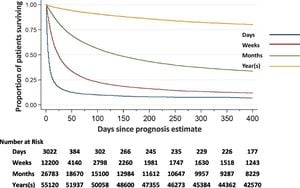The Netherlands is undergoing significant economic shifts, highlighted by its rising trade deficit with the United States and notable changes within its labor market. Recent figures indicate the Dutch have been importing more from the US than exporting, with goods exports rising by 40 percent compared to the same period in 2019, even as imports surged by 65 billion euros.
Specifically, the first three quarters of 2023 showed the trade deficit with the US peaked at 24 billion euros, making it clear the structure of Dutch-American trade is increasingly unfavorable for the Netherlands. Adjusting for import and export values related to re-exports still reveals stark negative balances.
One principal driver of this trade imbalance stems from substantially increased imports of mineral fuels, namely oil and natural gas. With Russia halting its energy supplies following the invasion of Ukraine, the US stepped up to fill the void. According to the national statistics agency CBS, Dutch imports of crude oil from the US amounted to 8.1 billion euros, constituting 23 percent of all crude oil imports. Liquefied natural gas also became significant, with its value soaring to 4.2 billion euros.
The comparative data from the CBS indicates alarming shifts; for example, the trade balance with the US deteriorated from -6.8 billion euros just four years prior to estimates of -16.3 billion euros through 2024. This shows how dependency on US fossil fuels has escalated due to external pressures and resulted directly from the high energy prices affecting global markets.
Unsurprisingly, the major major EU countries differ significantly from the Netherlands’ experience. For example, Germany's trade balance with the US expressed remarkable prosperity, achieving a surplus of 68.8 billion euros due to solid exports like automotive parts. Other EU nations like France and Ireland also showcased favorable trade dynamics.
Shifting gears, the Netherlands also witnesses notable changes within its workforce. The national statistics agency CBS reported the number of couples where both partners hold part-time positions has doubled over the last decade, increasing from 229,000 to 419,000. One is left to wonder if this reflects broader social change or economic necessity.
The results suggest shifting societal values alongside economic pressures. A survey noted higher incomes and tax concerns drive more couples toward part-time work, making two modest incomes preferable to one primary salary. The resulting structure sees couples balancing hours more equitably; many now work between 20-35 hours weekly, which blurs traditional gender roles and empowers women economically.
Labor economist Ronald Dekker commented, "Both partners putting in the same number of hours is very good for the economic independence of women." This palpable shift challenges historical norms and could influence future policymaking aimed at balancing work and family life. The employers’ organization VNO-NCW indicates these trends spiral from financial pressures turning part-time options appealing to many.
The interconnection between trade deficits and labor dynamics encapsulates the current narrative of the Dutch economy. While energy imports inflate the deficit numbers, conjoined shifts toward part-time work illuminate the changing labor environment. It is remarkable to note how these developments intertwine and reflect upon one another, posing questions about wider economic resilience. Will the Netherlands navigate these challenges successfully, or will these patterns of dependency and labor transformation lead to future economic vulnerabilities?



